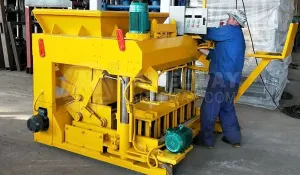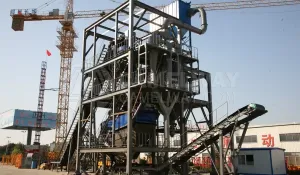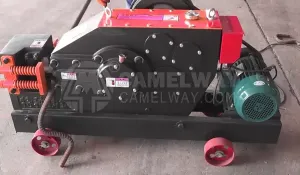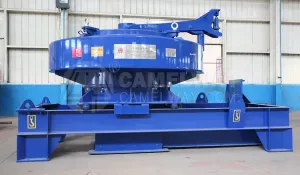How long does it take to cure the blocks?
Normally the concrete building blocks just have to cure overnight. In internationally markets it is not always common or necessary to have an enclosed curing room to maintain a consistent temperature. In this case I recommend covering the freshly made blocks with a dark or even colored light plastic. This will help in containing the moisture in the units and prevents the wind or sun light from prematurely drying out the blocks.
Can I cure building blocks inside a building with no heat?
Yes, you can do what we call an open cure, which is generally inside of the building using curing bays. A curing bay or room is a narrow with a low ceiling room that a fork lift places the freshly made building blocks into and the pulls down a curtain to hold in the moisture and heat the block is self-creating. Generally, the old industry rule is build one curing bay for each one hours’ worth of block production.
If your normal air temperature inside the curing bay is 75 °F (24 °C) degrees when you are loading fleshing made blocks into the curing room the next morning it will be 95 degrees. This is because the heat of hydration process activated and heated up the blocks hence raising the temperature in the enclosed room that had no assisted heat. Depending on the aggregates and mix design after one nights curing you can set the cured hollow core building blocks outside. In today’s world there are many type of curing methods you can also use depending on your climate conditions if you are planning on producing during the winter months.
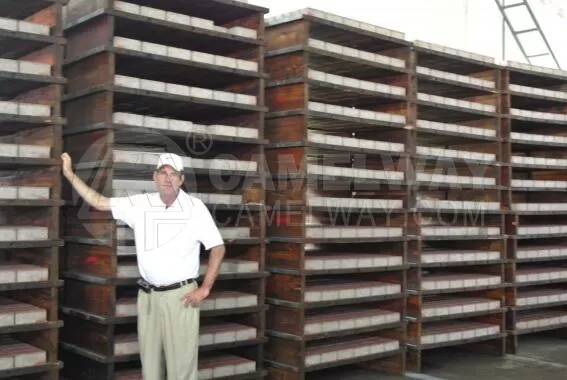
Do you have to bake the block at a high temperature overnight to make them hard?
No, concrete building blocks are not baked. However, it is import that the building blocks stay as warm as possible so the curing hydration process can begin. The most common method in the USA is steam curing. This is where the block plant has several curing rooms and once full of building blocks the temperature is raised up to no more than 150-165°F (66-74°C) for a short period of time. They will also combine this with mist steam to ensure all the blocks absorb water which allows the cement to activate and start its hydration process. Keeping moisture in the building block so it does not dry out prematurely is vital. If this does not occur the curing process slows down or stops which has a negative effect on PSI (MPA), strength. Allowing moisture out of the block in inconsistent ways can also change and the colors of your block if using color pigment in your mix and can lead to cracking of the block.
What is the coldest temperature I can still make concrete building blocks without heating the mix?
In cold weather areas of the world the general rule is you need to have the aggregates to be at least 42 °F (6°C). If the temperature gets any lower, you will want to consider heating the aggregates before they are placed into the concrete mixer. The reason is you need the concrete mix warm enough to allow the cement hydration process to begin. Without this reaction the building blocks will have no psi (MPA) strength because the cement did not activate in the hydration process bounding the sand, rock and cement together.
The ideal temperature for aggregates is between 55-60 °F (13-16°C) Adding water before you add cement to the sequence of materials is vital so you don’t will get a premature set or flash set in the concrete mix. If you have very cold aggregates and want to bring them up to the correct temperature you might need a water boiler unit. To bring them up to proper temperature might be adding up to 5% of the total mix by weight in water at 115 °F (46°C).
How long do I have to let the blocks cure before I can ship them?
This will depend on many factors such as the type of curing method you are using, your mix design and the type of block being produced. In many parts of the world, I have seen building blocks made and shipped within 24 hours of being produced! We would never suggest this in the USA because your breakage factor is going to be higher since generally your blocks are not fully cured. Also if the moisture in the block has not fully hydrated with the cement you could have cracking in the mortar joints after the mason has laid the blocks. That means the masonry walls might have to be knocked down and re installed by the mason. That could mean lost profits for you. I would suggest if you were in the USA you inventory the blocks a minimum of at least one to two weeks from the time it leaves the curing room. If you are making retaining walls and pavers, you will be able to ship sooner. It is not uncommon for producers to ship these products in one to two days. I still think for good quality control it is best to give the products at least a week to fully cure depending on your own unique situations.


